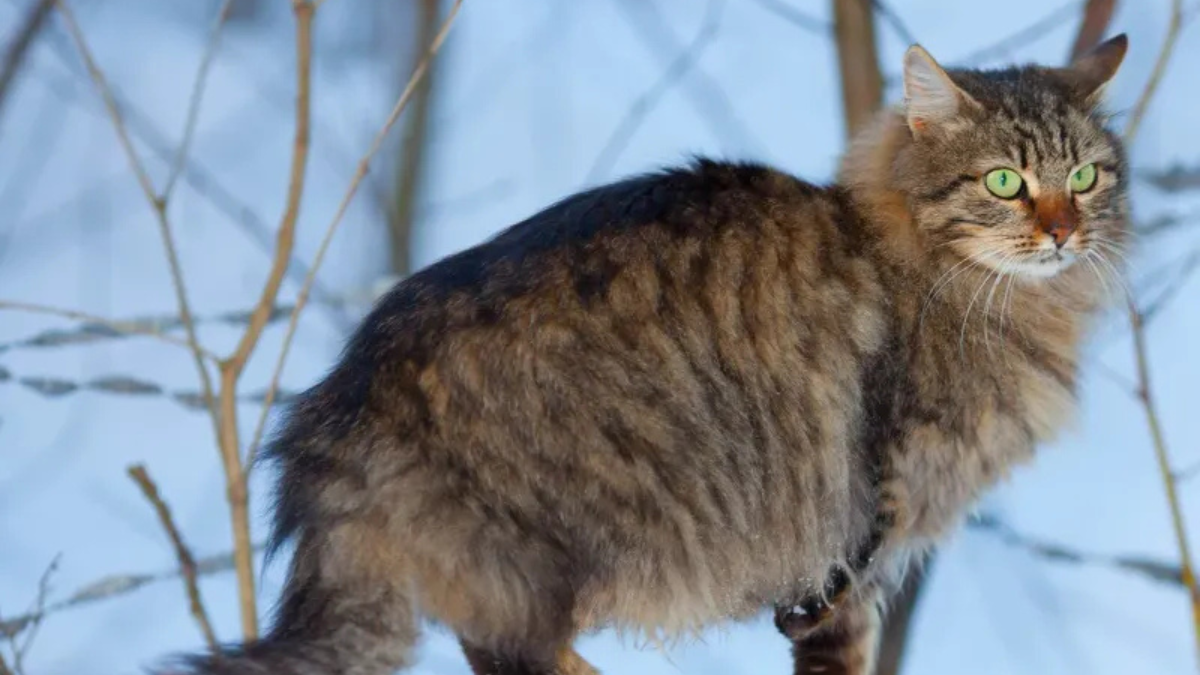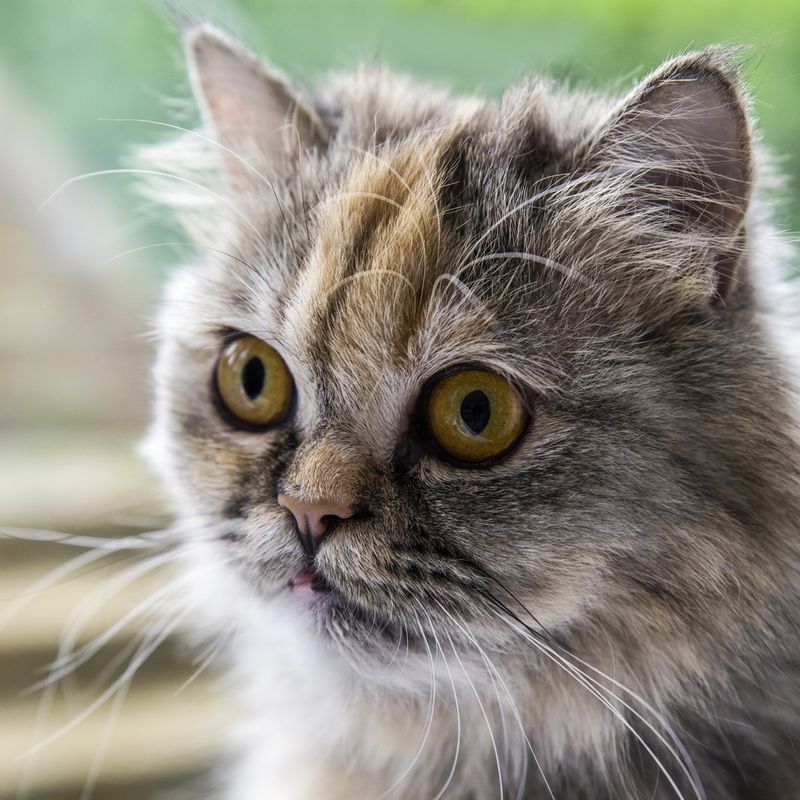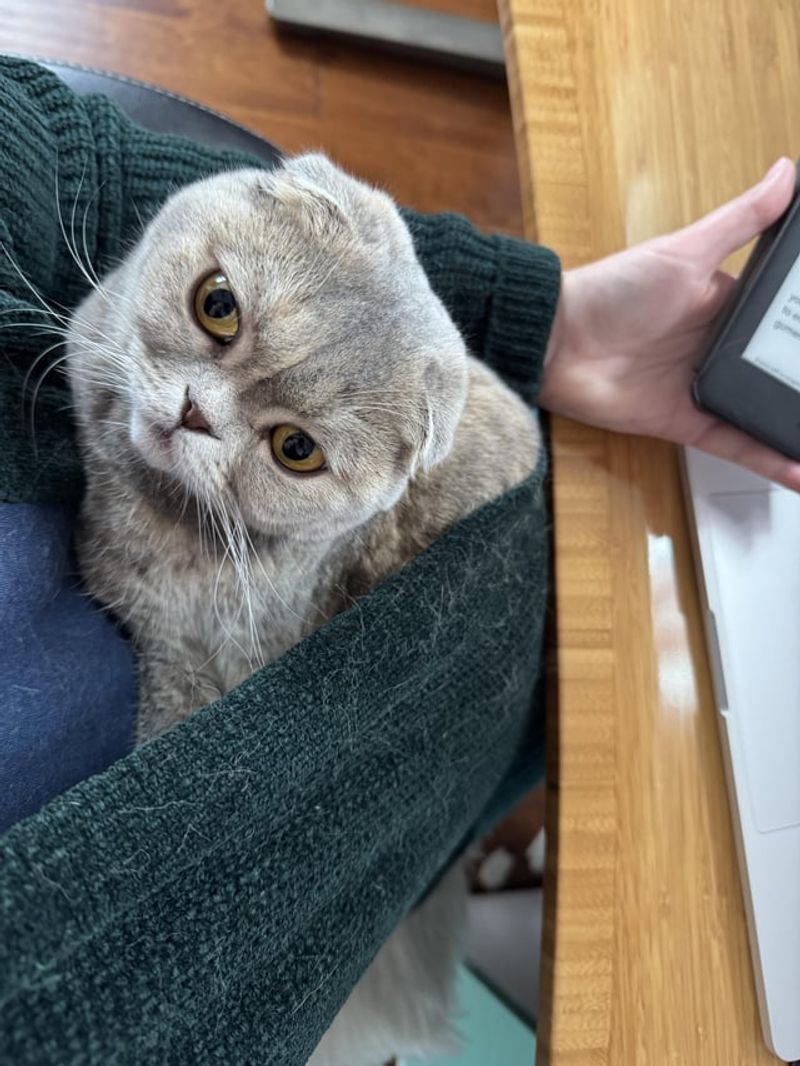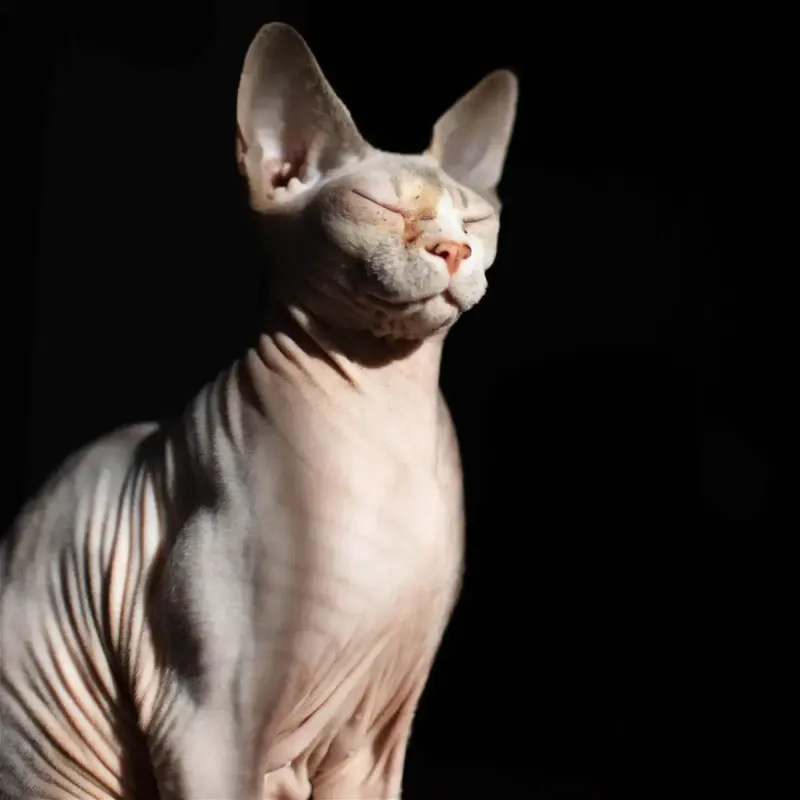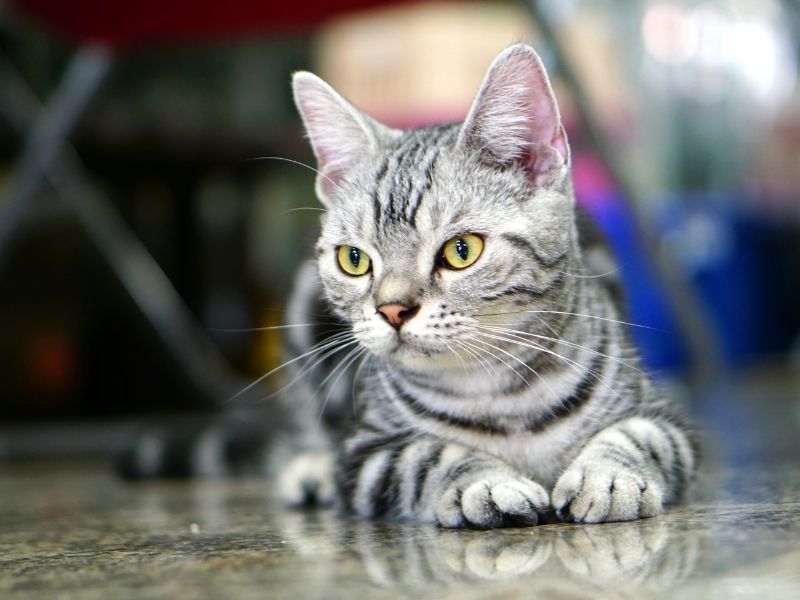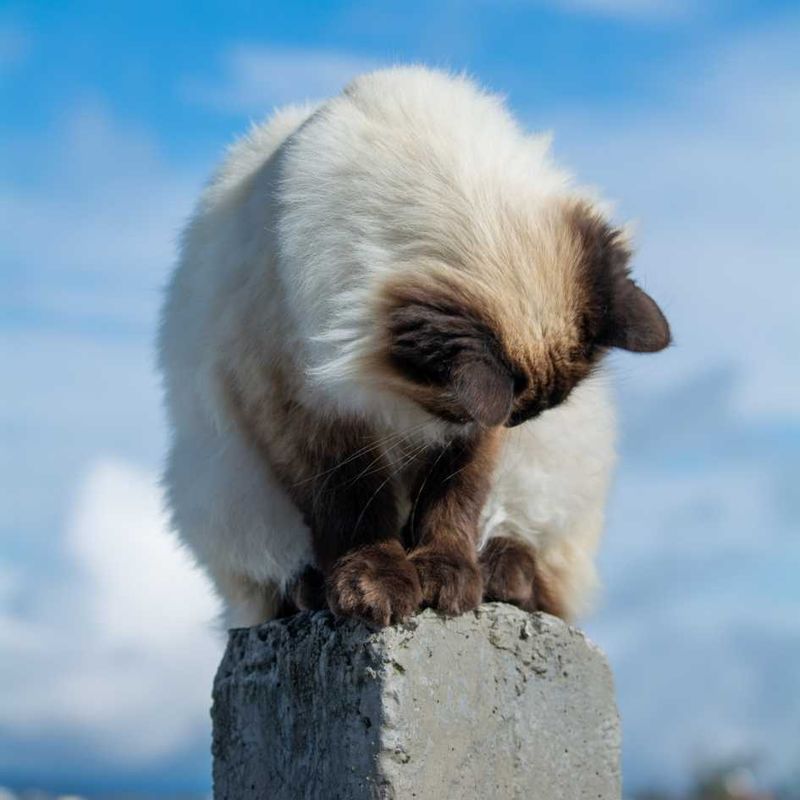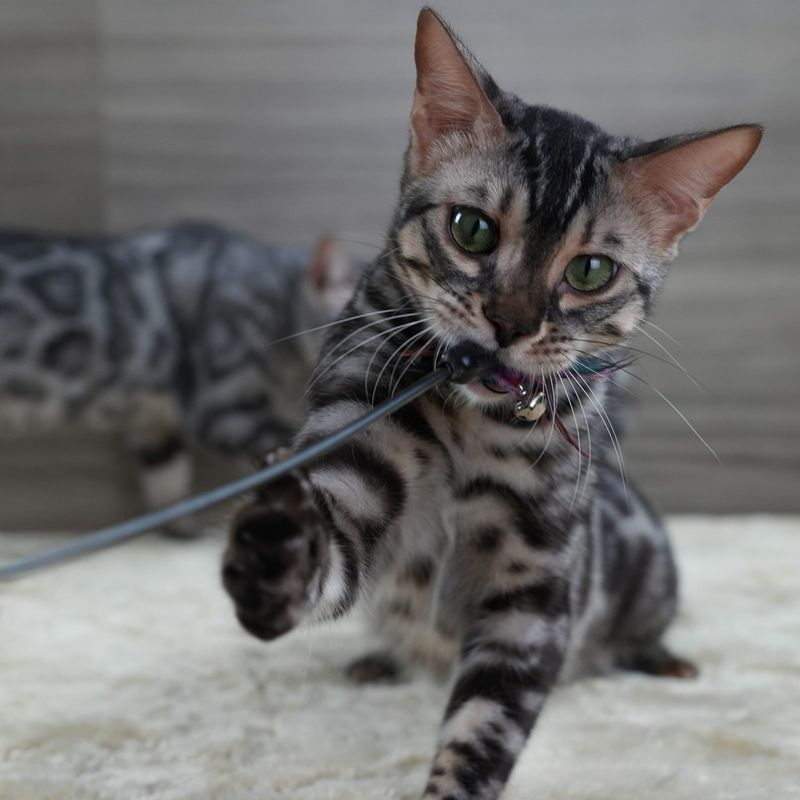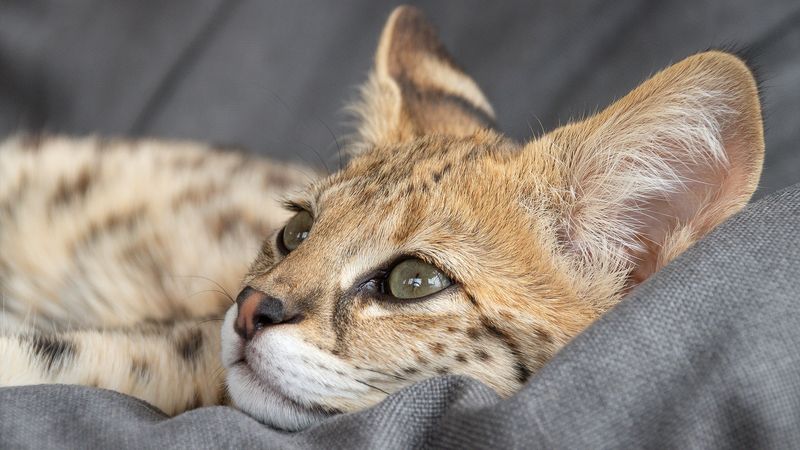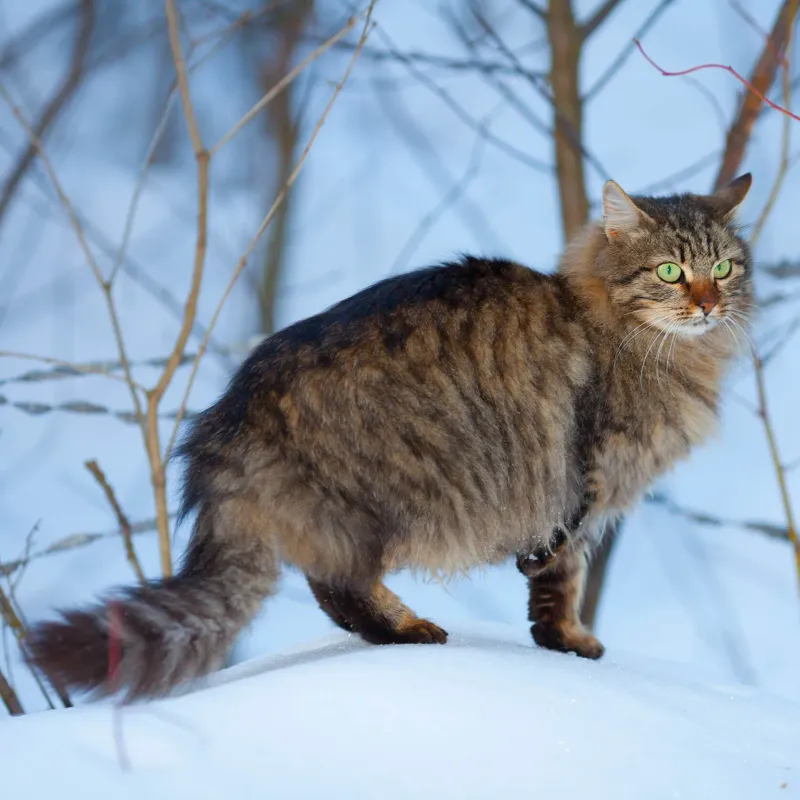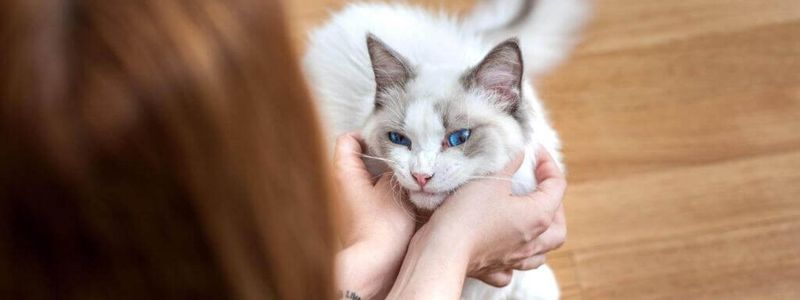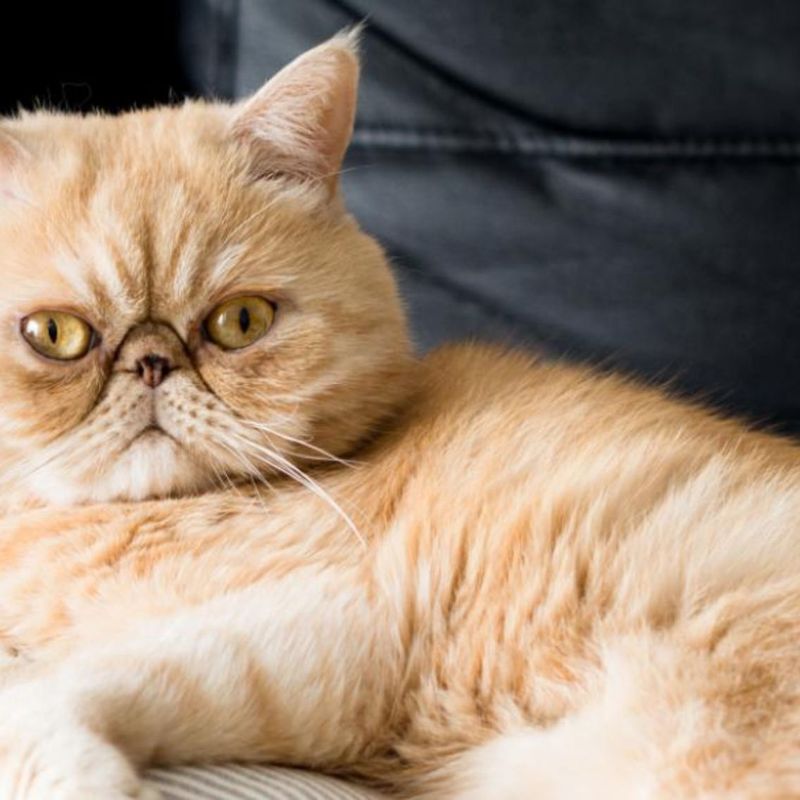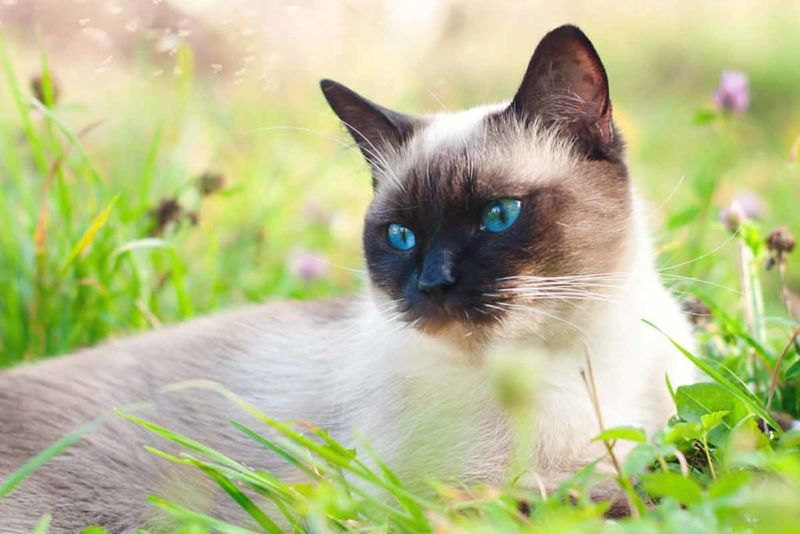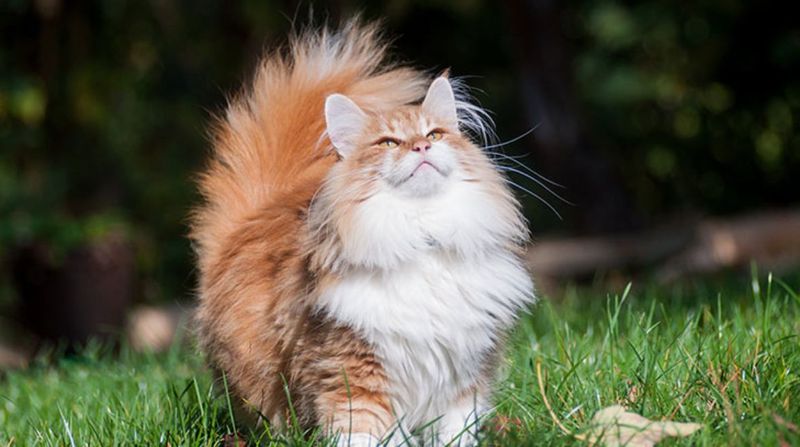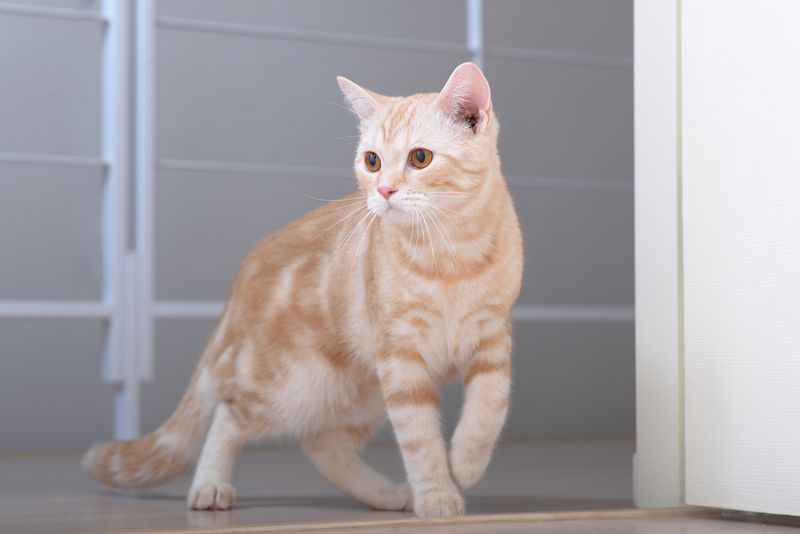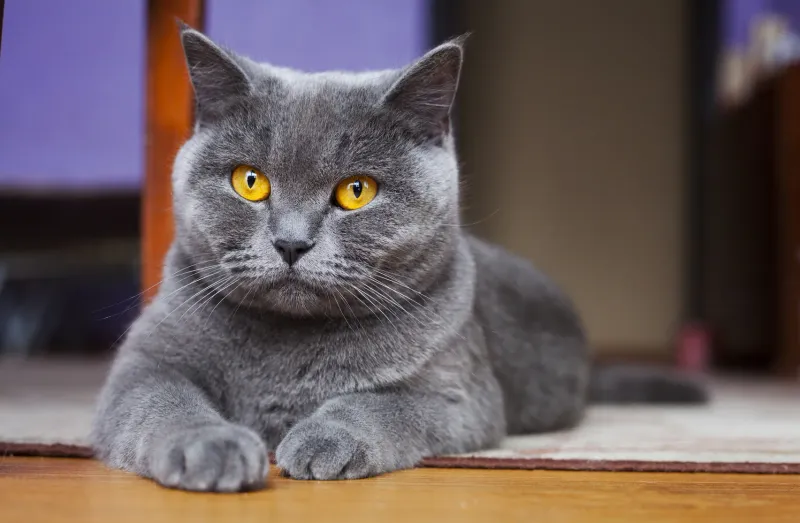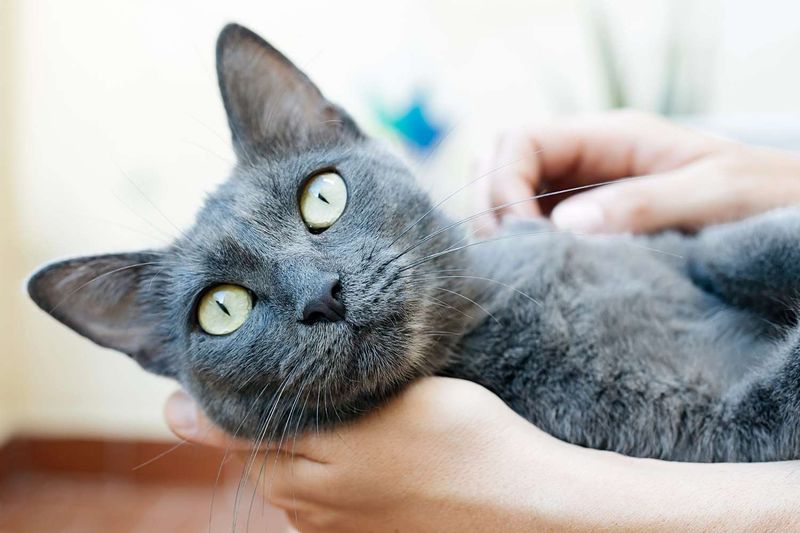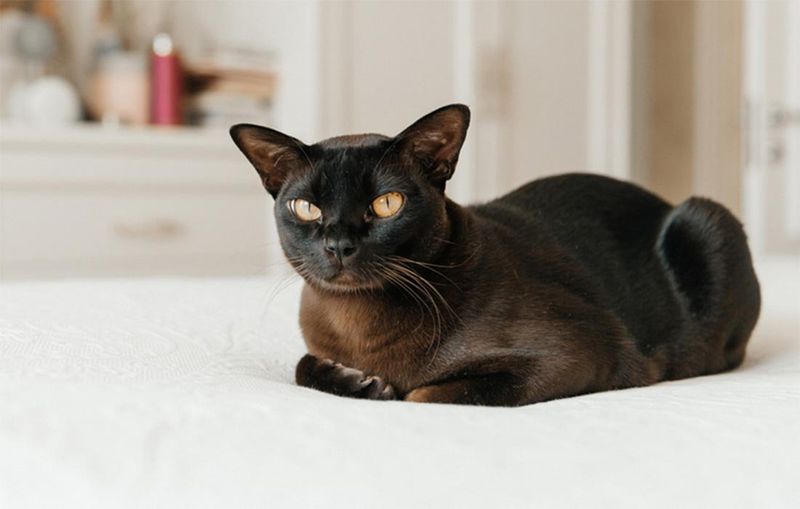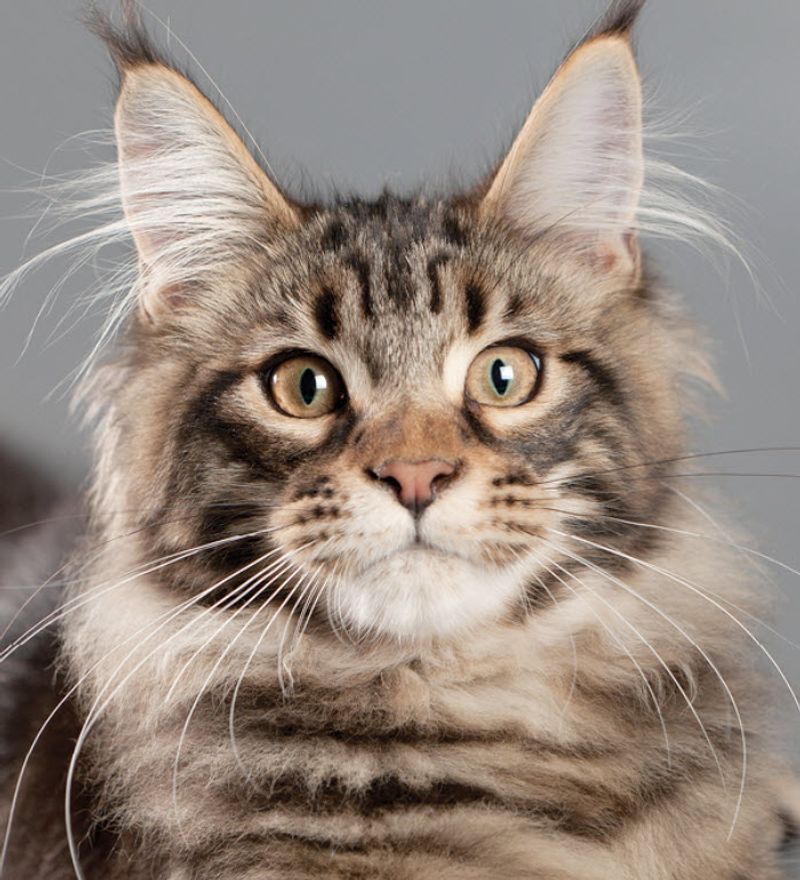📖 Table of Content:
Choosing a cat breed can be as challenging as it is exciting. While all cats deserve loving homes, veterinarians often have insights about certain breeds that prospective pet parents should consider. Some breeds may face higher risks of health issues, while others are known for their hardiness and balanced temperaments. Before bringing home your new feline friend, take a look at these expert opinions on which cat breeds might require extra care and which ones typically thrive with minimal health concerns.
1. Persian
Long-haired royalty with perpetually grumpy faces, Persian cats require significant maintenance that many owners underestimate. Their flat facial structure leads to breathing difficulties, tear duct problems, and dental issues throughout their lives.
Daily grooming is non-negotiable with Persians, as their luxurious coats mat easily and can cause skin infections when neglected. Without proper care, these cats often need professional grooming services.
Persians are also prone to polycystic kidney disease, a genetic condition affecting nearly 40% of the breed. Veterinarians caution that while these cats are undeniably beautiful, their health challenges translate to frequent medical visits and potentially costly care throughout their 12-15 year lifespan.
2. Scottish Fold
Beloved for their folded ears and owl-like appearance, Scottish Folds carry a genetic mutation that veterinarians have serious concerns about. This mutation affects cartilage throughout their bodies, not just in their ears.
Many Scottish Folds develop painful joint conditions as they age, particularly osteochondrodysplasia. This progressive condition causes abnormal bone development and cartilage problems, leading to arthritis even in young cats.
Ethical breeders avoid mating fold-to-fold, but the genetic mutation remains problematic regardless of breeding practices. Vets often warn potential owners that the cute folded ears come with a high likelihood of mobility issues, chronic pain, and specialized care requirements throughout the cat’s life.
3. Sphynx
Hairless wonders with wrinkled skin, Sphynx cats demand special care that many first-time owners aren’t prepared for. Their lack of fur means they lose body heat rapidly, requiring warm environments and often cat-specific clothing in colder months.
Skin issues plague these cats without proper maintenance. Weekly baths are essential to remove body oils that would normally be absorbed by fur. Without this routine, Sphynx cats develop skin infections and blackheads.
Veterinarians caution about their predisposition to hypertrophic cardiomyopathy, a serious heart condition common in the breed. Additionally, their exposed skin burns easily in sunlight, and they’re more susceptible to respiratory infections than furry counterparts, making them high-maintenance companions despite their lack of shedding.
4. Munchkin
Short-legged felines with normal-sized bodies, Munchkins face mobility challenges throughout their lives due to their deliberately bred physical deformity. Their stubby legs result from a genetic mutation that many veterinarians consider problematic from an ethical standpoint.
Their shortened limbs prevent normal cat behaviors like jumping, climbing, and proper self-grooming. Spinal issues frequently develop as these cats age, as their bodies weren’t designed to be supported by such short legs.
Joint pain becomes common as Munchkins mature, with arthritis developing earlier than in normal-proportioned cats. While adorably compact, veterinarians caution that breeding cats specifically for a skeletal abnormality prioritizes appearance over health and natural function, potentially leading to lifelong discomfort for these cats.
5. Himalayan
Cross-bred beauties combining Persian and Siamese traits, Himalayans inherit health challenges from both parent breeds. Their pushed-in faces lead to brachycephalic airway syndrome, causing breathing difficulties that worsen during hot weather or stress.
Eye problems are prevalent in Himalayans, including excessive tearing, entropion, and progressive retinal atrophy. Their long, dense coats require daily brushing to prevent painful matting and skin infections.
Kidney disease runs high in this breed, requiring specialized diets and regular veterinary monitoring. Vets often note that while these blue-eyed stunners make affectionate companions, prospective owners should prepare for both the grooming commitment and potentially significant medical expenses throughout the cat’s 9-15 year lifespan.
6. Bengal
Wild-looking athletes with boundless energy, Bengals challenge even experienced cat owners with their intensity. These cats retain many wild instincts from their Asian leopard cat ancestry, making them prone to marking territory and destructive behaviors when bored.
Their high intelligence demands extensive environmental enrichment. Without proper stimulation, Bengals often develop behavior problems that lead many owners to surrender them to shelters.
Veterinarians warn about their predisposition to hypertrophic cardiomyopathy and progressive retinal atrophy. Additionally, they’re more susceptible to digestive issues like inflammatory bowel disease than many domestic breeds. While stunning to look at, these mini-leopards require significant time investment, specialized diets, and owners committed to meeting their complex physical and psychological needs.
7. Savannah
Exotic hybrids resulting from crossing domestic cats with African servals, Savannahs present unique challenges that veterinarians caution about. Their wild heritage contributes to unpredictable behavior patterns that can include territorial aggression and marking, even in neutered cats.
Finding veterinary care can be difficult, as many clinics aren’t equipped to handle these large, strong cats safely. Their dietary needs differ from typical domestic cats, requiring specialized nutrition plans to prevent health issues.
Legal restrictions exist in many states and countries regarding Savannah ownership, particularly for F1-F4 generations. Veterinarians emphasize that these athletic, vocal cats need extensive space, climbing opportunities, and experienced handlers. Their wild instincts make them poor choices for households with children or other pets.
8. Siberian
Forest dwellers from Russia with triple-layered coats, Siberians rank among veterinarians’ top recommendations for family pets. Despite their fluffy appearance, they produce lower levels of the Fel d 1 protein, making them more tolerable for many allergy sufferers.
Hearty constitution is a hallmark of this ancient breed. They evolved naturally in harsh climates, resulting in fewer genetic health problems than many selectively bred cats. Their muscular bodies and balanced proportions support healthy joint function throughout their 15-20 year lifespan.
Veterinarians appreciate their adaptable personalities and problem-solving abilities. While they do shed seasonally, their coat is surprisingly low-maintenance, requiring just weekly brushing. Their playful nature combined with exceptional health makes them ideal companions for active households.
9. Ragdoll
Gentle giants with striking blue eyes, Ragdolls earned their name from their tendency to go limp when held. Veterinarians frequently recommend them for their balanced temperaments and adaptability to various living situations, from apartments to large homes.
Their semi-longhaired coats lack dense undercoats, making grooming manageable despite their fluffy appearance. Just weekly brushing prevents matting while maintaining their silky fur. This breed develops slowly, not reaching full size until around four years of age.
Health-wise, Ragdolls typically have fewer respiratory issues than flat-faced breeds. While they can develop hypertrophic cardiomyopathy, responsible breeders screen for this condition. Vets appreciate their docile nature, making medical examinations less stressful for both cat and veterinarian.
10. Exotic Shorthair
Persian-like teddy bears with easier maintenance, Exotic Shorthairs still face health concerns that veterinarians flag for potential owners. Their flat faces, while less extreme than Persians, cause similar brachycephalic issues, including breathing difficulties and chronic eye problems.
Dental disease occurs frequently due to their shortened jaw structure. Their teeth often become crowded, trapping food particles and leading to early tooth loss without vigilant care.
These cats struggle in hot weather, as their inefficient breathing makes cooling difficult. While their plush, low-maintenance coats require less grooming than Persians, vets caution that their cute appearance comes with respiratory challenges, tear duct overflow, and potential for skin fold infections that require regular medical attention throughout their lives.
11. Siamese
Vocal aristocrats with striking blue eyes, Siamese cats bring intelligence and personality to homes willing to engage with their chatty nature. Modern Siamese have fewer health issues than their ultra-slender show counterparts from decades past.
Veterinarians note their generally robust health and long lifespans, often reaching 15-20 years. Their short, fine coats require minimal grooming, making them low-maintenance from a care perspective.
While they can develop progressive retinal atrophy and dental issues, these conditions are less prevalent than in many other purebreds. Vets particularly recommend Siamese for homes seeking interactive companions. Their highly social nature means they form strong bonds with their people, though this also means they don’t tolerate being left alone for extended periods.
12. Norwegian Forest Cat
Mythical-looking forest dwellers with water-resistant coats, Norwegian Forest cats, developed naturally in harsh Scandinavian climates. Veterinarians often recommend these hardy cats for their excellent overall health and balanced temperaments.
Unlike many large breeds, they maintain good joint health well into their senior years thanks to their natural evolution. Their muscular bodies and proportional features support an active lifestyle without the structural problems seen in selectively bred cats.
While they can develop glycogen storage disease and hypertrophic cardiomyopathy, responsible breeders screen for these conditions. Vets appreciate their adaptable nature and minimal health demands. Despite their magnificent double coats, they’re surprisingly low-maintenance, requiring just weekly brushing except during seasonal shedding periods.
1. American Shorthair
Working cats with centuries of natural selection behind them, American Shorthairs rank high on veterinarians’ recommendation lists. These cats descended from European mousers who came to America on ships, evolving through practical function rather than appearance.
Their genetic diversity contributes to exceptional health and longevity, with many living into their late teens or early twenties. Medium-sized with balanced proportions, they rarely develop the structural problems seen in more extremely built breeds.
Veterinarians appreciate their low-maintenance coats, which require only occasional brushing, and their moderate activity levels that suit various households. While they can develop hypertrophic cardiomyopathy, the incidence is lower than in many purebreds. Their easygoing yet playful temperaments make them ideal family companions with minimal health-related expenses.
2. British Shorthair
Plush-coated teddy bears with easygoing temperaments, British Shorthairs make excellent family companions with fewer health concerns than many purebreds. Their sturdy, cobby bodies evolved naturally without extreme features that cause health problems.
Veterinarians caution about their tendency toward obesity, which can lead to diabetes and joint issues if their diet isn’t carefully managed. Their dense coats shed seasonally but require only weekly brushing to maintain.
Hypertrophic cardiomyopathy occurs in the breed, though responsible breeders screen breeding stock. Despite this concern, vets note that British Shorthairs typically enjoy good health throughout their 14-20 year lifespans. Their calm demeanor makes them suitable for various living situations, though their independent nature means they’re content with moderate rather than constant interaction.
3. Russian Blue
Silver-tipped aristocrats with plush double coats, Russian Blues consistently rank among veterinarians’ top breed recommendations. These cats have maintained natural proportions without extreme features, contributing to their excellent health profiles.
Genetic diversity within the breed has prevented many hereditary conditions common in other purebreds. Their moderate build and balanced structure support healthy joint function throughout their often lengthy 15-20 year lifespans.
Veterinarians appreciate their minimal grooming needs despite their plush appearance. Their dense coat sheds very little, making them suitable for cleanliness-conscious owners. While reserved with strangers, their loyal, gentle temperaments make veterinary visits less stressful. For homes seeking a quiet, healthy companion with few medical needs, Russian Blues represent an excellent choice.
4. Burmese
Silky-coated companions with expressive golden eyes, Burmese cats bring sociability and playfulness well into their senior years. Veterinarians often recommend them for their generally robust health and balanced physical structure.
Unlike many breeds with extreme features, Burmese have maintained moderate builds that support good joint health throughout their lives. Their short, fine coats require minimal grooming, typically needing just occasional brushing to remove loose hair.
While they can develop craniofacial defects and hypokalemia (low potassium), responsible breeders test for these conditions. Vets appreciate their stable temperaments that make medical care easier. Their medium size, muscular but not extreme build, and social nature make them excellent family cats with relatively few health-related expenses.
5. Maine Coon
Gentle giants with tufted ears and bushy tails, Maine Coons developed naturally in harsh New England climates. Their evolution through natural selection rather than extreme breeding has contributed to their generally robust constitution.
Veterinarians caution about their predisposition to hypertrophic cardiomyopathy and hip dysplasia, particularly in cats from lines bred for extreme size. Responsible breeders screen for these conditions, reducing risk significantly.
Despite these concerns, vets often recommend Maine Coons for their balanced temperaments and overall hardiness. Their water-resistant coats require only weekly brushing to prevent matting. While larger than average cats, their growth occurs slowly over 3-5 years, allowing their frames to develop properly. Their dog-like personalities and adaptable nature make them suitable for various household situations.
